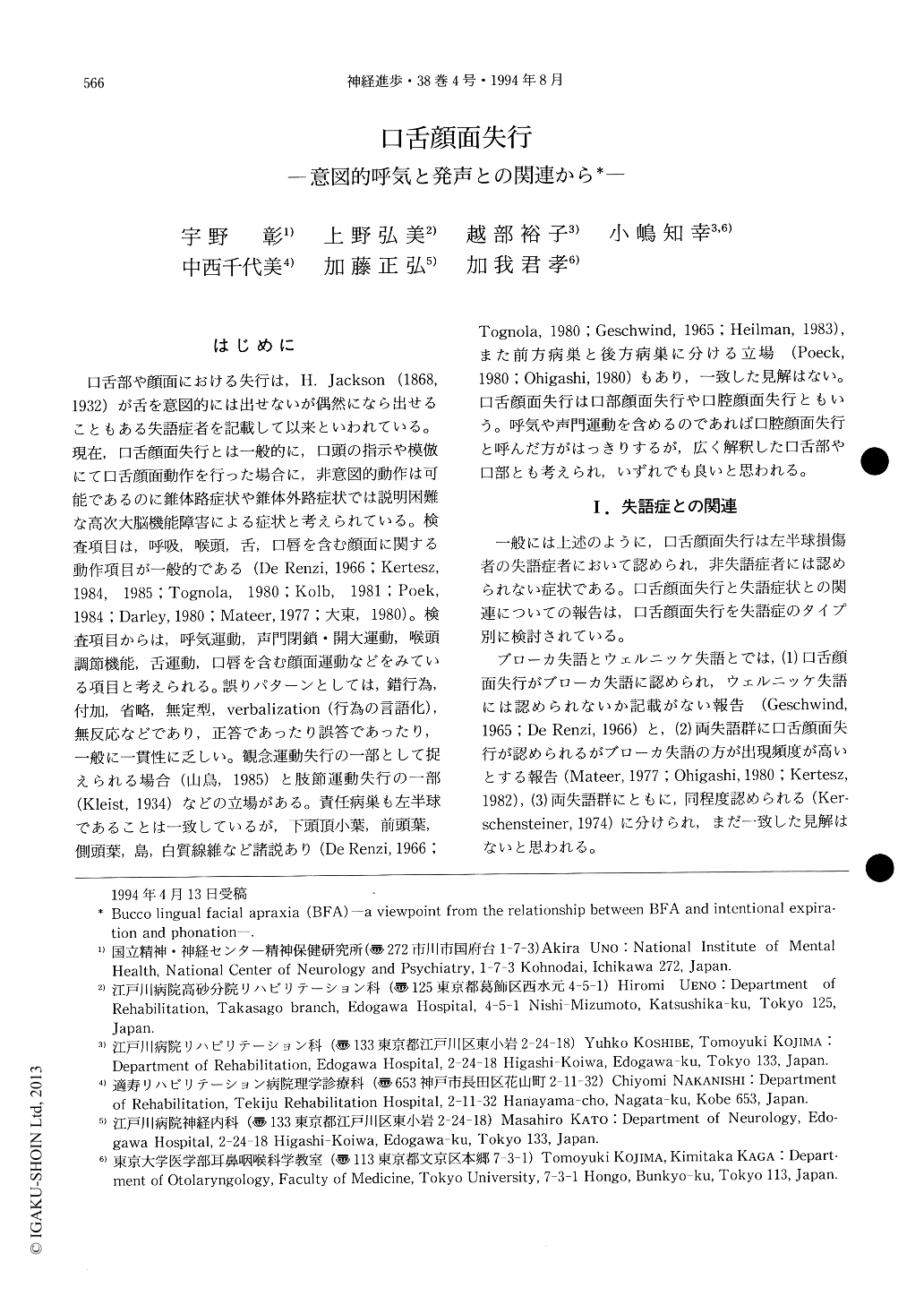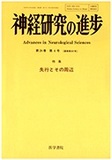Japanese
English
- 有料閲覧
- Abstract 文献概要
- 1ページ目 Look Inside
はじめに
口舌部や顔面における失行は,H. Jackson(1868,1932)が舌を意図的には出せないが偶然になら出せることもある失語症者を記載して以来といわれている。現在,口舌顔面失行とは一般的に,口頭の指示や模倣にて口舌顔面動作を行った場合に,非意図的動作は可能であるのに錐体路症状や錐体外路症状では説明困難な高次大脳機能障害による症状と考えられている。検査項目は,呼吸,喉頭,舌,口唇を含む顔面に関する動作項目が一般的である(De Renzi,1966;Kertesz,1984,1985;Tognola,1980;Kolb,1981;Poek,1984;Darley,1980;Mateer,1977;大東,1980)。検査項目からは,呼気運動,声門閉鎖・開大運動,喉頭調節機能,舌運動,口唇を含む顔面運動などをみている項目と考えられる。誤りパターンとしては,錯行為,付加,省略,無定型,verbalization(行為の言語化),無反応などであり,正答であったり誤答であったり,一般に一貫性に乏しい。観念運動失行の一部として捉えられる場合(山鳥,1985)と肢節運動失行の一部(Kleist,1934)などの立場がある。
In this paper we first summarized the literature of the bucco lingual facial apraxia (BFA). Then we reported our new data concerning intentional expiration and phonation with aphasic patients. The survey of the literature on the bucco lingual facial apraxia reveals much controversy about its mechanism, the responsible lesion site, and the relationship between types of aphasia and apraxia of speech.
We investigated 29 aphasic patients accompanied by BFA in order to clarify the characteristics of BFA. We found BFA in both Broca aphasics and Wernicke aphasics.

Copyright © 1994, Igaku-Shoin Ltd. All rights reserved.


